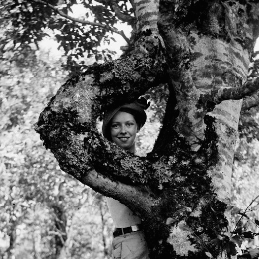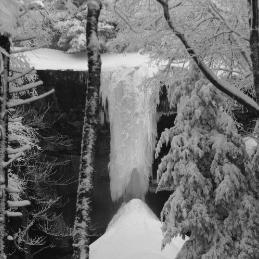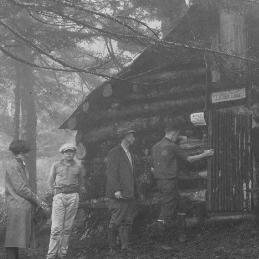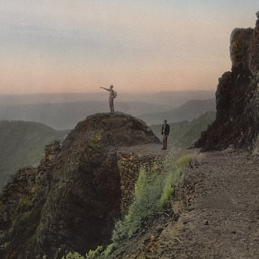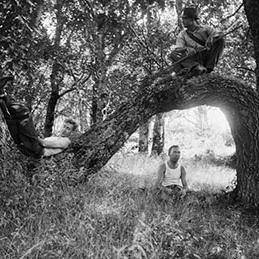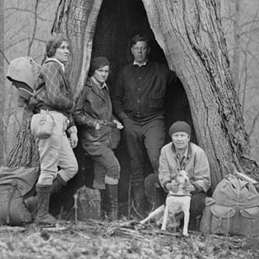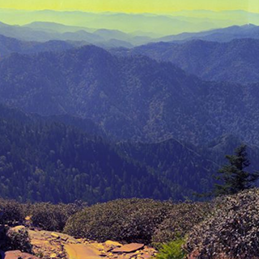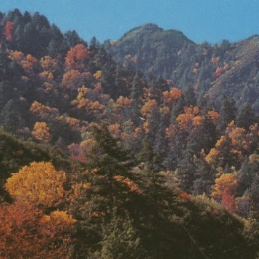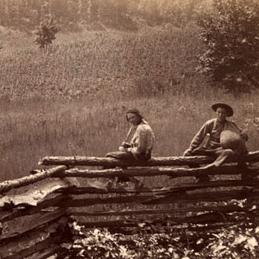Browse
"Possible Ecological Mechanisms for Loss of Vernal Herb Diversity in Logged Eastern Deciduous Forests." Ecological Applications 5, no. 4 (1995): 935-946.
"Trends in Landscape Heterogeneity Along the Borders of Great Smoky Mountains National Park." Conservation Biology 4, no. 2 (1990): 135-143.
"Effects of Disturbance by Visitors on Two Woodland Orchid Species in Great Smoky Mountains National Park, USA." Biological Conservation 31, no. 3 (1985): 211-227.
"Disturbance and Vegetation Response in Relation to Environmental Gradients in the Great Smoky Mountains." Vegetatio 55, no. 3 (1984): 129-139.
"Exotics in the Parks." National Parks 57, no. 1-2 (1983): 25-29.
"Island Biogeogrpahy and Preserve Design: Preserving the Vascular Plants of Great Smoky Mountains National Park." Natural Areas Journal 3, no. 4 (1983): 4-13.
Ease of Visitor Access and the Population Structure of Two Woodland Orchid Species in Great Smoky Mountains National Park: An Investigation of Possible Effects of Plant Poaching. Athens, GA: US National Park Service Cooperative Unit, University of Georgia, 1982.
"Firewood-Gathering Impacts in Backcountry Campsites in Great Smoky Mountains National Park." Environmental Management 6, no. 1 (1982): 63-71.
"Patterns of European Wild Boar Rooting in the Western Great Smoky Mountains." Castanea 47, no. 3 (1982): 230-242.
"The Status of Botanical Information on National Parks in the Southeastern United States." Castanea 47, no. 2 (1982): 137-147.
"Disturbance and Recovery of Plant Communities in Great Smoky Mountains National Park: Successional Dynamics and Concepts of Naturalness." In Successional Research and Environmental Pollutant Monitoring Associated with Biosphere Reserves, edited by M. A. Hemstrom and Jerry F. Franklin, 42-79. Washington, DC: US National Committee for Man and the Biosphere, 1981.
"Monitoring Vegetation and Rare Plant Populations in US National Parks and Preserves." In The Biological Aspects of Rare Plant Conservation, edited by Hugh Synge, 265-278. New York: John Wiley & Sons Ltd. , 1981.
A Survey of Ecological Inventory, Monitoring and Research in U.S. National Park Service Biosphere Reserves In Research/Resources Management Report. Gatlinburg, TN: U.S. Department of the Interior, National Park Service, 1981.
"After Preservation: Philosophical and Practical Problems of Change." Biological Conservation 18, no. 4 (1980): 241-255.
"Agricultural Area Impacts WIthin a Natural Area: Cades Cove, A Case History." Environmental Management 4, no. 5 (1980): 433-448.
"Black Bear/Human Conflicts in the Great Smoky Mountains National Park." In Bears -- Their Biology and Management: Fifth International Conference on Bear Research and Management, 137-139. West Glacier, MT: International Association for Bear Research and Management, 1980.
"Rare Plant Management -- After Preservation What?" Rhodora 82, no. 829 (1980): 49-75.
"The Rate of Woody Plant Invasion on Two Grassy Balds." Castanea 45, no. 2 (1980): 75-87.
"Grassy Balds of the Great Smoky Mountains: Their History and Flora in Relation to Potential Management." Environmental Management 3, no. 5 (1979): 417-430.
Impacts of White-tailed Deer on the Vegetation of Cades Cove, Great Smoky Mountains National Park In Proceeding of the Annual Conference South East Association of Fish and Wildlife Agencies 33., 1979.
Preliminary Status of Rare Plants in Great Smoky Mountains National Park In Management Report. Gatlinburg, TN: Uplands Field Research Laboratory, 1979.
"Rooting Impacts of the European Wild Boar on the Vegetation of Great Smoky Mountains National Park During a year of Mast Failure." In 2nd. Conference on Scientific Research in the National Parks, 276-293. San Francisco, California, 1979.
"Trail Erosion Patterns in Great Smoky Mountains National Park." Environmental Management 3, no. 5 (1979): 431-445.
"The Vegetation of Grassy Balds and Other High Elevation Disturbed Areas in the Great Smoky Mountains National Park." Bulletin of the Torrey Botanical Club 206, no. 4 (1979): 264-275.
"Biological Monitoring in UNESCO Biosphere Reserves with Special Reference to the Great Smoky Mountains National Park." Biological Conservation 13, no. 2 (1978): 105-114.



